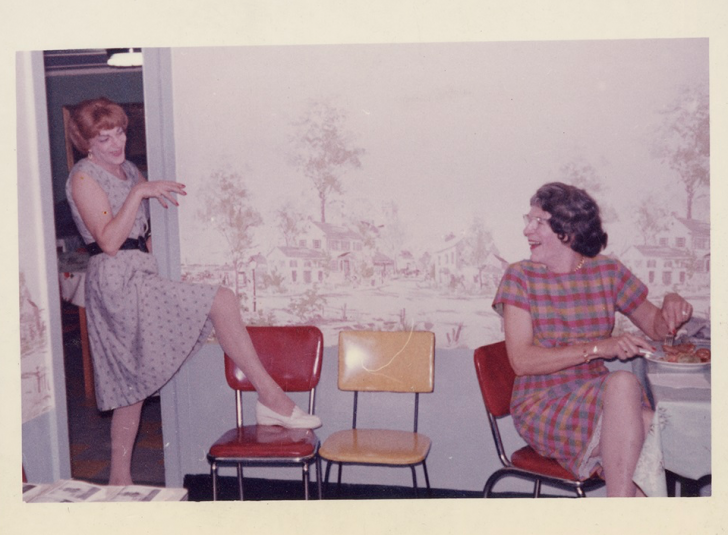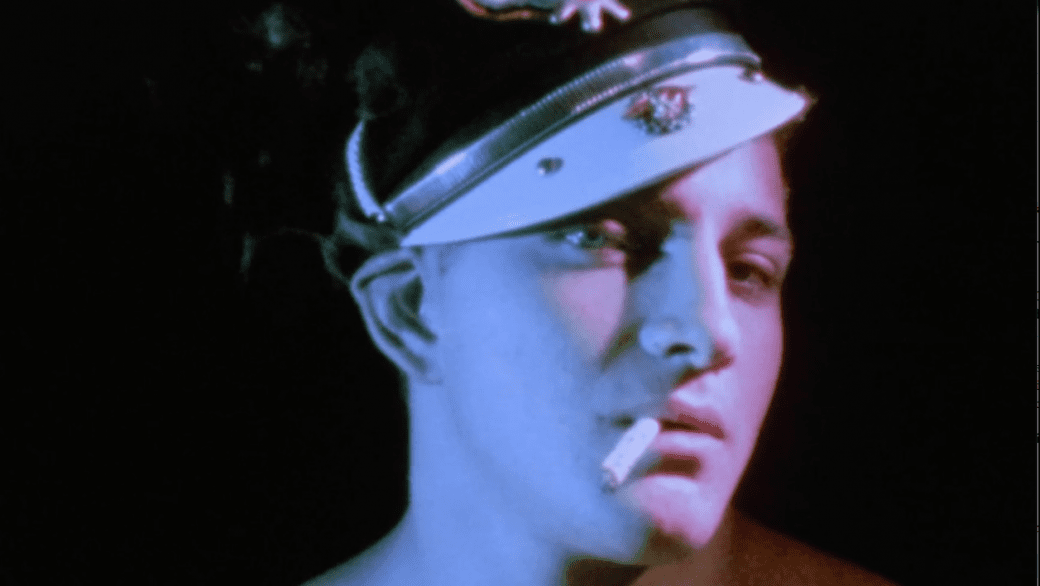Back in 1996, while performing at Buddies in Bad Times Theatre, Quentin Crisp once offhandedly quipped that being gay was like sitting on the edge of a swimming pool while watching everyone else dive in. His remark was met with some notable snorts of disdain from the audience, objecting to his characterization of our community as a group of sad rejects. And yet that sense of being unable to fully participate in society is something nearly every queer will have at some point in their lives.
The people operating on the peripheries of culture are captured in the AGO’s current exhibition. Appropriately dubbed Outsiders, it includes an array of photographs and films from the 1950s through the 1980s, capturing figures on the fringes of society; bikers and beat poets intermingle with sex workers and failed fashionistas.

Of course, queers feature prominently. Nan Goldin captures drag queens preparing to perform or picnicking in the sun. Robert Swope’s found photos from the Casa Susanna depict the trans women who gathered at the Hunter, NY home on weekends to don dresses and wigs, while living the rest of their lives as men. Shirley Clarke’s Portrait of Jason looks at an African American sex worker and cabaret performer. Jack Smith’s once-banned film Flaming Creatures portrays a group of misfits disrupting sexual and gender norms as they act out their fantasies.
Perhaps the most outsider-outsider is Kenneth Anger. The controversial queer filmmaker’s seminal work Scorpio Rising is literally positioned at the edge of the main gallery, playing on a loop in a separate space.
His 30-minute homoerotic twist on James Dean and Marlon Brando–inspired biker imagery caused a shit storm when it premiered in 1964. Police showed up to cancel the run and arrested the theatre manager on charges of obscenity, though he was eventually acquitted. (The legal process paralleled Anger’s earlier film Fireworks, which also saw its purveyors charged with obscenity, but ultimately set free.)
“He was the first openly gay filmmaker and one of the first experimental filmmakers,” says Jim Shedden, who co-curated the exhibition with Sophie Hackett. “His pioneering use of editing pop music with a kinetic montage had a huge influence on later works like Easy Rider, American Graffiti and the films of Lynch and Tarantino. He also had a bit impact on the development of rock videos, which I’m sure horrifies him.”
Though it became the moniker under which show’s disparate characters are united, the project didn’t actually start out with the idea of looking at outsiders. Rather, it evolved organically in response to different bodies of work they were receiving, including the Casa Susanna photos and works by Diane Arbus, who also features in the show.
“No matter where you look in American photography during this point, you see these subcultures being represented,” Shedden says. “The figure of the outsider in popular culture reveals the nature of our society as one which is premised on freedom but is actually based on conformity.”
Outsiders: American Photography and Film, 1950s–1980s
Runs until Sunday, May 29, 2016
Art Gallery of Ontario, 317 Dundas St W, Toronto
www.ago.net


 Why you can trust Xtra
Why you can trust Xtra


